2018 Faculty Participants
Students will work in the lab for one or both mentors on the research team. For more information about faculty research interests, visit their websites via the links below or by visiting: http://www.vanderbilt.edu/vicb/members.htm
Lauren Buchanan (Chemistry)Misfolded proteins are gaining interest in both the scientific and medical fields due to their propensity for forming cytotoxic amyloids, which are associated with a number of diseases such as type II diabetes, Alzheimer’s, Huntington’s, and Parkinson’s. On the other hand functional amyloids can be seen in human hormone storage in secretory granules. Amyloid fibrils, which can be functional or cytotoxic, are peptide or protein aggregates that organize into long, unbranched fibrils with a cross β-sheet structure. The structural mechanism of how proteins can self-assemble is currently unknown. Our research is focused on functional amyloids as a model for the aggregation process for cytotoxic amyloids. Specifically, two human hormones, cholecystokinin (CCK) and gastrin, that share the C-terminal sequence: WMDF. This is the minimal sequence needed for biological activity and has demonstrated the ability to convert between amyloid and crystalline structures by varying pH levels. In the body CCK and gastrin exist as varying short peptide fragments of the full length hormone. The short fragments are easily synthesized; thus, they are excellent starting points for studying amyloid reversibility. 2D infrared spectroscopy, using ultrafast lasers, has the temporal resolution necessary to observe real time structural changes, and when implemented with isotope-labeled samples can monitor protein structure with single-residue resolution. This can be used to determine a precise aggregation mechanism. Understanding the structural mechanistic properties of functional amyloids can provide insight on disease-linked amyloids and future therapeutics or reversal of diseases associated with amyloid fibrils. |
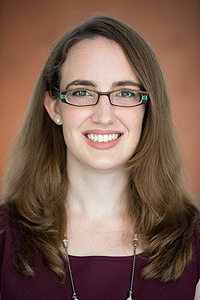
|
|
Brian O. Bachmann (Chemistry)Brian O. Bachmann is Principal Investigator of the Vanderbilt Laboratory for Biosynthetic Studies. The vision of the VLBS is threefold. (1) Understanding the biosynthesis of biologically active natural products will enable us to engineer new natural products that will become the next generation of drugs to treat human illnesses. (2) By studying and understanding the evolutionary mechanisms for how nature evolves bioactive natural products, we will develop new paradigms for the construction of biosynthetic pathways for compounds that are not natural products, but should be. (3) Discovery of new natural products from untapped ecosystems, and development of methods for their discovery will lead to new therapeutics. |
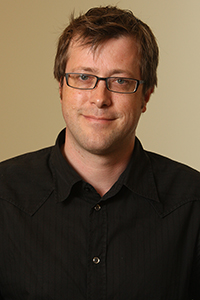
|
|
Walter J. Chazin (Biochemistry) and Eric P. Skaar (Microbiology/Immunology)In tissues infected by pathogens such as Staphylococcus aureus, the host responds by depriving the invading organism of essential nutrients that are critical for growth and survival, mechanisms termed nutritional immunity. For example, calprotectin (CP) is heterodimeric protein that forms an integral part of the innate immune response to invading pathogens by sequestering away essential transition metals including zinc and manganese. This project involves defining the functional basis for CP’s activity through the design, production and evaluation of calprotectin mutants that alter its capacity for binding essential metals and ability to bind to cell surface receptors that mediate the inflammation associated with the immune response. This project is best suited to students who have taken a biochemistry and/or microbiology course and who may have knowledge of site-directed mutagenesis by PCR and protein purification. Students should possess an interest in learning state of the art multi-disciplinary research and will use a combination approaches ranging from bacterial growth suppression assays to high-resolution structural analysis. |
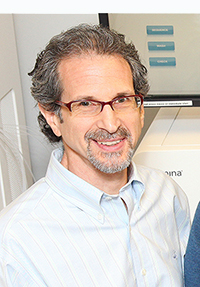
|
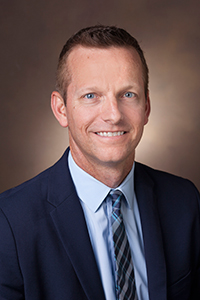
|
Carlos Lopez (Biochemistry, Cancer Biology, and Biomedical Informatics)The work in the Lopez lab aims to understand how molecular interactions in cellular reaction networks lead to cell decisions and community behavior. The central questions in the lab center around: what are the dynamics of biological networks? Can we explain and predict the behavior of such networks? These networks comprise stochastic molecular interactions. How does stochasticity play a role in network processes and cellular outcomes? To address these goals we employ multi scale modeling techniques coupled with experimental data to explain cue-response mechanisms in model and cellular systems and predict outcomes based on our observations. Techniques used in the lab include molecular modeling, reaction kinetics modeling, continuum modeling, Bayesian statistics, machine learning, and high-performance parallel computing. The lab places a strong emphasis in answering important challenges in biology, including biomedical, bioengineering, and toxicology applications. |

|
|
Borden Lacy (Pathology, Microbiology, and Immunology)Defining the structures of proteins that regulate microbial functions can be the first step in understanding how these proteins contribute to bacterial survival or pathogenesis. In this project, students will take part in a discovery-based experimental pipeline for structural characterization of novel bacterial protein targets, with opportunities to collaborate directly with microbiology researchers in a multi-disciplinary environment. Researcher Skills and Interests: This project is best suited for those students who have taken a biochemistry course and who have an interest in proteins and protein structure. Students will learn molecular biology, biochemistry, and structural biology techniques including PCR-based mutagenesis, protein purification, biophysical and functional characterization assays, and protein crystallization. |

|
|
Larry Marnett (Biochemistry, Chemistry)A major interest in the Marnett laboratory is the structure and function of cyclooxygenase-2 (COX-2). This enzyme catalyzes the committed step in the production of prostaglandins and is the molecular target for non-steroidal antiinflammatory drugs. Functional analysis of COX-2 by structure-guided mutagenesis has uncovered new strategies for synthesizing COX-2 inhibitors and has suggested new biological roles for the enzyme. Current work focuses on the generation of novel antiinflammatory drugs with additional pharmacological functions and on investigations of the chemistry and biology of COX-2-dependent oxygenation of the endocannabinoid, 2-arachidonylglycerol, to glyceryl prostaglandins. Another major interest in the Marnett laboratory is the chemistry and biology of DNA damage by endogenously generated products of oxidative stress. Individual products of DNA damage are incorporated into viral genomes for in vivo mutagenesis experiments. Similar experiments are used to identify human DNA repair enzymes that remove specific forms of DNA damage. A new area of interest in the laboratory is the investigation of protein targets of drugs and toxic compounds and the consequences of protein modification in modulating biological function. A broad range of techniques are used by the Marnett group including chemical synthesis, enzymology, protein expression, site-directed mutagenesis, bioanalytical chemistry, mass spectrometry, in vivo mutagenesis, tissue culture, proteomics, and techniques of signal transduction. |
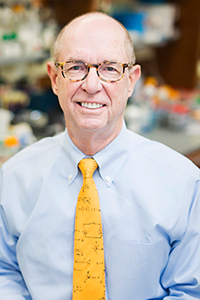
|
|
Michael Stone (Chemistry)The adduction of DNA by mutagenic chemicals represents the initiating step in chemical carcinogenesis. Our laboratory seeks to understand how mutagenic chemicals perturb DNA structure and conformation, and how this alters the biological processing of DNA during replication and repair. NMR spectroscopy is used to delineate molecular conformations and dynamics in solution. X-ray crystallography monitors the structures of protein-DNA complexes related to replication and repair. Structural data is correlated with biochemical data obtained in vitro and site-specific mutagenesis data obtained using bacterial and mammalian cells, to develop structure-activity relationships. |

|
|
Gary Sulikowski (Chemistry)Our group is interested in the total synthesis and study of natural products of interesting structure, scarcity in nature and high probability of biological activity. Natural products of current interest include arachidonic acid metabolites such as isofurans, prostaglandin metabolites and hemiketals. We are also interested in the synthesis and study of antimicrobial natural products such as the chrysophaentin family of marine natural products. From the perspective of chemical synthesis we aim to develop concise and flexible synthetic routes to these natural products that will allow for the preparation of analogs to support their biological study including defining their mode of expressing biological activity. This work is done in collaboration with researchers within the Vanderbilt Institute of Chemical Biology. These studies also serve as an excellent opportunity for the training of young scientists interested in the art and practice of chemical synthesis. |
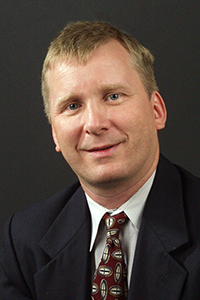
|
